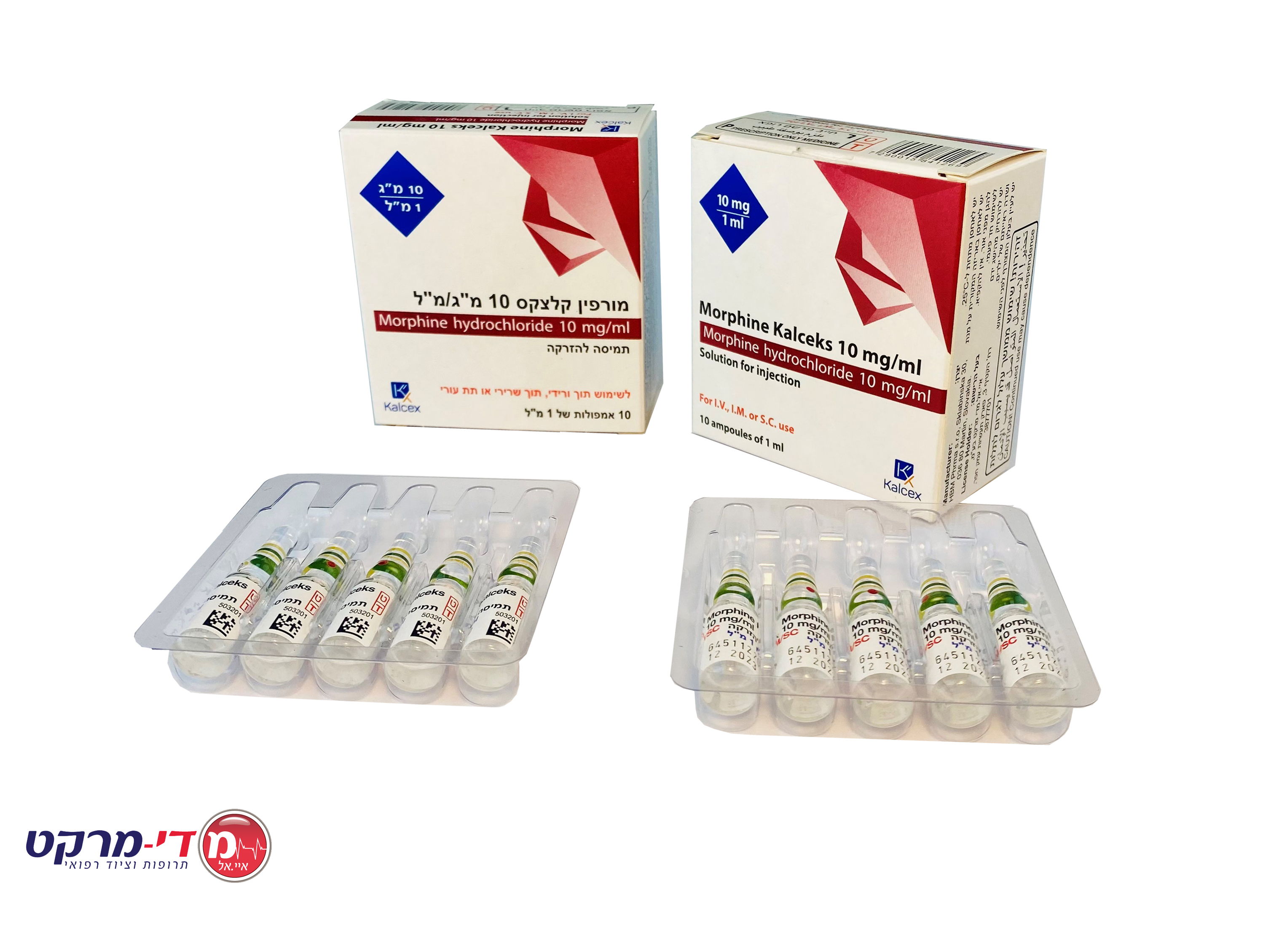Quest for the right Drug

מורפין קלצקס 10 מ"ג/מ"ל MORPHINE KALCEKS 10 MG/ML (MORPHINE HYDROCHLORIDE)
תרופה במרשם
תרופה בסל
נרקוטיקה
ציטוטוקסיקה
צורת מתן:
תת-עורי, תוך-שרירי, תוך-ורידי : S.C, I.M, I.V
צורת מינון:
תמיסה להזרקה : SOLUTION FOR INJECTION
עלון לרופא
מינוניםPosology התוויות
Indications תופעות לוואי
Adverse reactions התוויות נגד
Contraindications אינטראקציות
Interactions מינון יתר
Overdose הריון/הנקה
Pregnancy & Lactation אוכלוסיות מיוחדות
Special populations תכונות פרמקולוגיות
Pharmacological properties מידע רוקחי
Pharmaceutical particulars אזהרת שימוש
Special Warning עלון לרופא
Physicians Leaflet
Pharmacological properties : תכונות פרמקולוגיות
Pharmacodynamic Properties
5.1 Pharmacodynamic properties Pharmacotherapeutic group: Natural opium alkaloids, ATC Code: N02AA01 Morphine is a narcotic analgesic obtained from opium, which acts mainly on the central nervous system and smooth muscle. Morphine is a potent analgesic with competitive agonist actions at the μ- receptor, which is thought to mediate many of its other actions of respiratory depression, euphoria, inhibition of gut motility and physical dependence. It is possible that analgesia, euphoria and dependence may be due to the effects of morphine on a μ-1 receptor subtype, while respiratory depression and inhibition of gut motility may be due to actions on a μ-2 receptor subtype. Morphine is also a competitive agonist at the κ-receptor that mediates spinal analgesia, miosis and sedation. Morphine has no significant actions at the other two major opioid receptors, the δ- and the σ- receptors. Morphine directly suppresses cough by an effect on the cough centre in the medulla. Morphine also produces nausea and vomiting by directly stimulating the chemoreceptor trigger zone in the area postrema of the medulla. Morphine provokes the release of histamine.
Pharmacokinetic Properties
5.2 Pharmacokinetic properties The pharmacokinetics of morphine is not dose dependent. Absorption Maximum blood concentration is reached within 10-20 minutes. Distribution The volume of distribution of morphine is approximately 3 L/kg with a plasma protein binding of about 35 %. Morphine is widely distributed throughout the body, mainly in the kidneys, liver, lungs and spleen: lower concentrations appear in the brain and the muscles. Morphine crosses the placenta and is excreted into the breast milk (see section 4.6). Biotransformation Morphine is metabolised in the liver to the two main metabolites morphine-3-glucuronide (lacks analgesic effect but can contribute with excitatory effects) and morphine-6-glucuronide (M6G) (more potent than morphine itself). Small amounts of morphine-3,6-diglucuronide can also be formed. Morphine and its metabolites undergo enterohepatic circulation. Elimination Morphine is primarily eliminated via glucuronidation, and the excretion of unchanged morphine in the urine is 5-10 %. Clearance is approximately 24 mL/min*kg and the half-life is about 2-3 hours. Up to 10 % of a dose may be excreted via the bile into the faeces. M6G is excreted via urine, which causes M6G accumulation in renal impairment. Special population The morphine bioavailability can increase in liver cancer patients. Hepatic impairment Impaired hepatic function influence the elimination of morphine. Renal impairment Impaired renal function influence the elimination of morphine. M6G is excreted via the urine. Accumulation of the active metabolite M6G occurs in patients with renal impairment.

שימוש לפי פנקס קופ''ח כללית 1994
לא צוין
תאריך הכללה מקורי בסל
לא צוין
הגבלות
לא צוין
מידע נוסף
